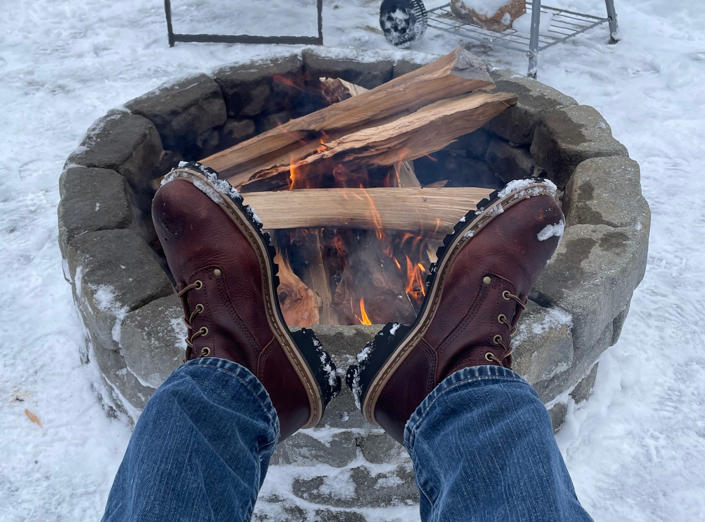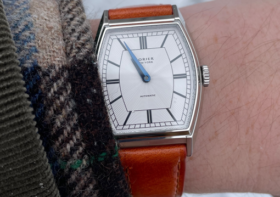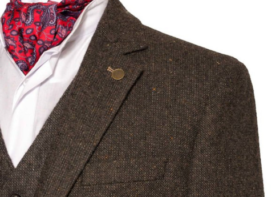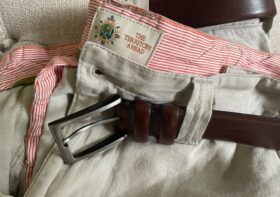Product Review: Carolina Logger Boots

By now, you guys have seen these boots featured or mentioned a few times by me. I don’t like to review products too soon after getting them because I really want to live with an item for a while in order to give it a fair review.
It’s been a while since I did a product review. Today, I am reviewing the logger boots from Carolina that I bought a few months ago. I wrote an article right after I bought them about the fact that these boots were the first significant purchase I had made for myself in years. I know that sounds strange coming from someone who thinks and writes about clothes as much as I do, but it’s true.
Anyway, after several months, I feel that I have worn these boots enough to give an honest and balanced opinion of them.
I’ll give you my overall impression first and then break it down a bit. Here we go…
Overall, the boots are handsome, comfortable, and sturdily built. For what I paid for them, I feel they were a good buy and I have no buyer’s remorse.
Here are the features I appreciate the most…
Commando Sole
Being a logger style, these boots have a very aggressive sole, which I have really enjoyed wearing this winter.

I feel much steadier on my feet than I did with boots that sported a more subtle tread. As I’ve gotten older, I have come to recognize the importance of good traction, as falls (and even small slips) can damage the body and take weeks to recover from. Also, I don’t want to slip and fall when I am alone outside with the children or if I am carrying one of them. Beyond just the traction aspect, I find that the thick sole provides more space between my feet and the cold ground, which keeps them relatively warm.
Logger Heel
It took me a little while to get used to walking in these boots since the logger-style of the heel makes them “high heels”, essentially.

The heel is elevated so there is a pitch-forward of the foot. I initially thought this would cause my toes to be smooshed into the front of the boot (like with my Rancourt Chukkas) but that doesn’t happen at all. Even with the higher heel, my foot sits comfortably in the middle of the footbed. The benefit of the elevation and the unique, pointier shape of the logger-style heel is that it digs into the ground to provide support on uneven surfaces. I was a little skeptical at first of the heels’ effectiveness, but after wearing the boots around town in icy parking lots, on short hikes, and actually chopping wood (the activity for which this style of boot was originally created) I can attest that the style of the heel DOES in fact provide more stability than regular boots. If I am on a slippery surface, I can walk with a pronounced heel-strike and get a great deal of traction. Lastly, the higher heel gives me a couple extra inches putting me at about 6’2” when I am wearing them. It might sound silly, but I do feel a bit more confident having the extra height.
Steel Toe
I’ve always felt like I was on a bit of borrowed time chopping wood in rubber Hunter boots (and I have had people on social media chastise me for it). Honestly, my chopping style puts my toes largely out of harm’s way, but there is always the chance that an errant axe-blade can find my foot. Now, however, I have the peace of mind of wearing boots with proper steel toes.

Thankfully, I can’t attest to the strength of the steel toe in response to an axe-strike and I plan to keep it that way! It’s always good to be prepared for the worst, though. As far as comfort, I don’t find the addition of the steel toes add any real noticeable weight to the boots.
General Comfort
I was initially looking for a boot that was insulated and waterproof, however none of the boots that checked both those boxes were remotely comfortable. I also didn’t feel like going through a “breaking-in” process. In my opinion, lengthy break-in periods are a big scam that bootmakers push in order to sell cool-looking but uncomfortable and impractical boots. They’ve convinced men that hard, uncompromising boots are really signs of quality and craftsmanship, when in reality, they just didn’t bother to take the time to make a comfortable boot. Anyway, I didn’t feel like there was much of a break-in period at all with these boots, which is how it should be.

The difference maker between these boots (which are not insulated or waterproof) and the other ones I tried (which were) as well as some other boots I have owned in the past is the softness and flexibility of the upper. The upper is 8” which makes it pretty imperative that the leather be supple considering how much flexing it needs to do (since it goes so far up the calf). These uppers are a thick, tumbled leather that was soft right out of the box. I haven’t had any rubbing and I have worn them almost exclusively for months.

As far as the overall fit, unfortunately, I am apparently a little in-between sizes. The 10.5 was almost perfect and probably would have been if I planned on wearing thin socks all the time. Since I wanted to be able to wear thick boot socks with these boots, I found the 10.5 a bit too snug. I decided to go up to the size 11 and I think that was the right decision. There’s a bit of room even with thick socks, but with footwear it’s always better to err on the side of “too big” rather than “too small”.
As for the boots not being insulated or waterproof, I have not found it to be problematic. I wear the boots in deep snow frequently, but it’s often too cold for that snow to melt on my clothes or boots while I am outside, so I don’t really get all that wet. The heavy socks also ensure my feet stay warm enough for the amount of time I’m outside. When I do encounter slush or mud, the thick sole and tall heel keep my foot out of the wetness.


Price
This was the big reason why I pulled the trigger on these boots. They only cost $135 (with a store discount). At full price, they are about $145. To me, that’s a very good deal for a pair of boots as comfortable and functional as these. You can keep your rock-hard, $300+ Red Wing Heritage boots.
Final Word
These boots were a good buy. They are absolutely built for real work, but they still look good. For me, the biggest selling points were comfort and price. Yes, I did compromise on the insulation and waterproofness, but I still feel like I made the right choice.




